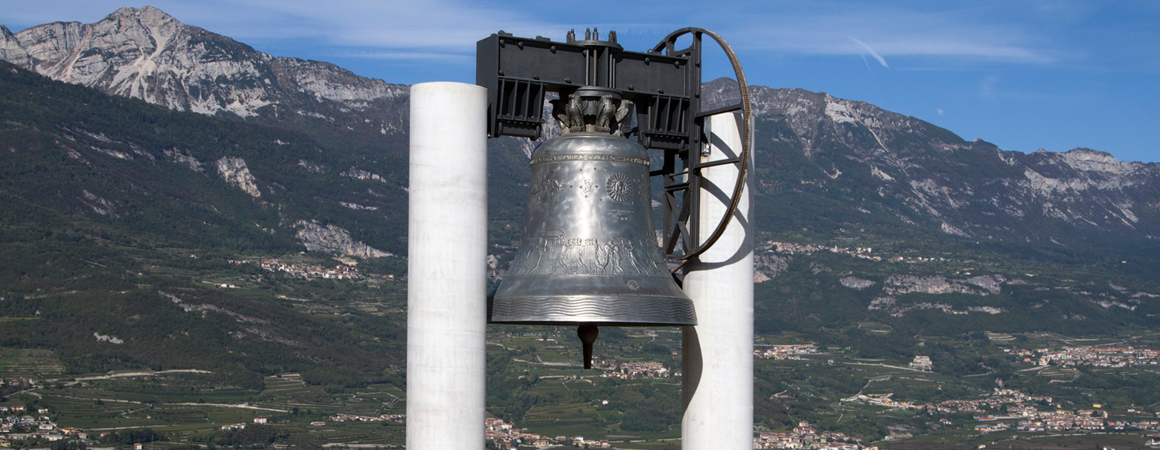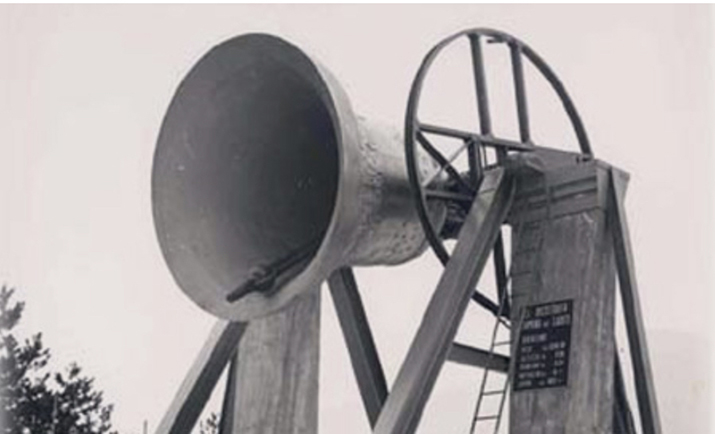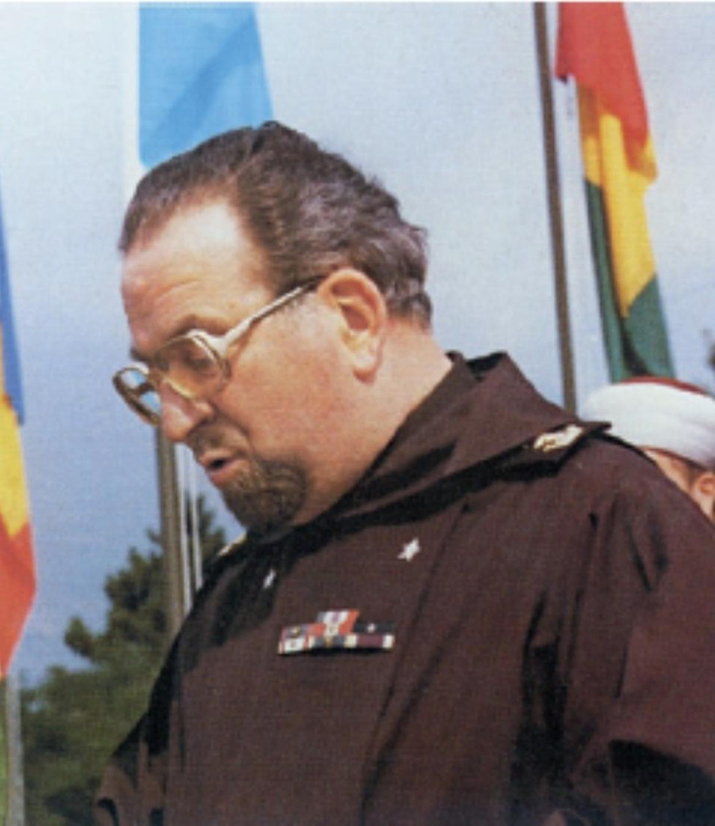FOR WHOM THE BELL TOLLS - P19
"A reminder of war, but also a sign of Peace". It was late in the evening of 30 October 1965 when Pope Paul VI pronounced these words while receiving in audience the members of the Regency and other authorities from Trentino, accompanied by the Archbishop of Trento, Alessandro Maria Gottardi. The Bell meanwhile rested in the middle of St Peter's Square where it remained until the next day, when in the Sunday Angelus from the window of his study the Pontiff spoke again of Maria Dolens and those who had brought her back to life. "The Bell of the Dead is really the Bell of the Living.
For it invites us not to forget those who have died because of war, and to pray that war may cease in the world and that Peace may reign among all peoples'. The crowd listening to him included a thousand people from Trentino who had arrived for the occasion, and thousands of people drawn by the last sessions of the Second Vatican Council. Above all, Pope Montini emphasised the new meaning that the symbol of Peace was to take on at a time in history torn apart by the war in Vietnam, which was escalating dangerously from month to month. It was no longer just the War Memorial Bell, but a warning for the whole world.
With this new mission, Maria Dolens returned to Rovereto on 3 November, welcomed by the crowd in Piazza Rosmini. It was a scene that had played out after previous relocations too, but this time the emphatic tone gave way to calm, measured words—mindful of the tensions that had gripped the city following the decision to move the Bell to a new location. The following day, the people of Trentino paraded in front of the bronze, which rested on the pavement of the square and was bathed by a light rain. The journey to the Miravalle Pass began on the 5th and lasted 48 hours, not without some logistical difficulties, but with the support of at least 15,000 people.
The new arrangement was technical, nothing fancy: two reinforced concrete pylons, designed more for functionality than aesthetics. But it was precisely that 'structural nakedness' that enhanced the form and meaning of the Peace symbol. To hear Maria Dolens tolling again, we had to wait until Easter 1966, which fell on 10 April. The silence had lasted six years. The official inauguration instead was held on 28 May, a date chosen to commemorate the 50th anniversary of the death of Damiano Chiesa, a Trentino hero of the Great War. With him, Fabio Filzi and Cesare Battisti were also commemorated. After the words of Paul VI, however, the spirit had shifted: it was no longer just the national martyrs being honoured, but the shared memory of all victims of conflict. Representatives of 24 nations also climbed the Hill, while religious ceremonies were held in an ecumenical style, combining Catholic, Evangelical, Orthodox and Jewish rites.
The era of territorial claims and national rivalries seemed to have come to an end. Europe was beginning to look for a common language for Peace. Primo Levi’s hope was beginning to take shape—his call, nearly twenty years earlier, to cultivate memory so that what had happened would not happen again. Meanwhile, Kurt Vonnegut, who as an American prisoner of war had endured the Allied bombing of Dresden, was writing Slaughterhouse- Five in which he declared that 'there are no good wars, only well-told lies'.
Great ideals were gaining ground, even if local tensions remained unresolved. While the controversy over the Bell’s new location continued to dominate public opinion in the city—drawing in institutional bodies as well—a presidential decree on January 18, 1968, granted legal status to the Foundation. This was the crowning achievement of the work begun by Don Rossaro and later carried forward by Father Iori. It was a decisive step for the future of Maria Dolens, but it also led to an immediate reaction from the group opposed to the removal of the Bell from the castle rampart. It was at that moment that the campaign to denounce the Regency's actions was forcefully relaunched. In an attempt to reconcile the rift, on 16 May 1966, Father Iori sent a letter to the director of the Historical Museum and the chairman of the 'Don Rossaro Recognition Committee' in which he asked for forgiveness from those who had felt offended. But that was not enough, he also made two concrete proposals for 'fruitful collaboration': 'The sale of a common entrance ticket, the amount of which would be split in half between the two entities', and the presence of a representative of the Museum and the Committee in the Regency of the Opera Campana. Neither proposal was accepted. The Museum waited until 1970 and then filed a civil lawsuit against the Regency, which resulted in a very long process ending in 1983 at the Court of Cassation in Rome with a final ruling in favour of the Foundation.
The Bell, however, could not lie still for 13 years pending the outcome of the trial and in fact it did not. On the contrary, it intensified its activity in the direction indicated by Pope Montini. On 14 September 1975, on the occasion of the Holy Year, an ecumenical rite was held on Miravalle Hill to remember the victims of all wars and to remind the powerful of their duty to keep the Peace. That 'International Day of Remembrance for All the Fallen' was attended by ambassadors from over forty nations, representatives of more than twenty religious denominations and a huge crowd. The Piazzale delle Genti was born, a real place created to offer a home to humanity in search of moments of dialogue.
As always, Father Iori regarded that success as a new starting point. But this time things were different. When the news reached Rovereto, it was a shock for everyone. The President, on a mission in Rome on behalf of Maria Dolens, had died suddenly during the night. It was 12 August 1979. His had been a full life, that of a man of action. Upon taking office, he had expressed his intention to give the Regency legal stability and the Bell universal significance. Fait accompli. This is the legacy of a visionary who worked for Peace for 26 years, right up to his last day of his life.








